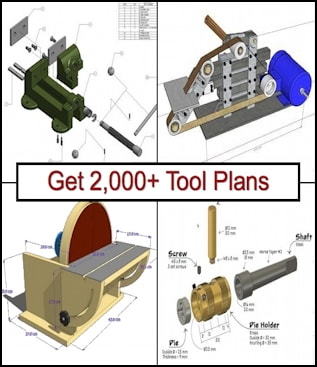I modified an existing lathe carriage locking mechanism to ensure there would be enough clearance for installing a future DRO magnetic scale (a digital read-out system made by DRO PROS) on the lathe cross slide. Unfortunately, there is very little room in between the existing carriage clamping nut and where I plan to install a DRO magnetic scale on the cross slide. There would be no room to lock the nut with a box wrench even though the future magnetic scale will be only 10 mm thick. Moving the carriage clamping assembly farther away from the cross slide is not an easy option and I did not want to mount the magnetic scale on the other side of the cross slide nearest to the chuck.
My solution was to fabricate a new locking clamp with an internally threaded hole positioned at an offset from the clamp’s central axis and providing the required clearance to the cross slide. The new design also includes a handle for locking the carriage and eliminates the need for a separate wrench. In practice the carriage can be locked with less than 30 degree angular movement of the handle and there is an internal O-ring providing enough resistance to keep the handle from moving when unlocked. Now the gap between the new locking clamp edge and the cross slide measures 12 mm and will easily accommodate the future 10 mm thick DRO magnetic scale and ensures no interference.
The photos show various stages of machining the new lathe carriage clamping nut. The body of the clamp is 0.875” dia. 12L14 steel rod with M10x1.5 internal thread and the clamp handle is 0.25” dia. 303 stainless steel rod and has M6x1 threaded end. It was necessary to add an O-ring (see photo) for preventing the existing carriage locking bolt from slipping down and into the lathe carriage mechanism when adjusting the new carriage lock. Adjustments were made by removing a few thousandths of material from the bottom of the carriage clamp in order to position the clamping lever parallel to the lathe ways. An added benefit of the O-ring is providing turning resistance while the lever is in the unlocked position so it remains out of the way as the tailstock is moved toward the headstock.


 LinkBack URL
LinkBack URL About LinkBacks
About LinkBacks


 Reply With Quote
Reply With Quote



Bookmarks